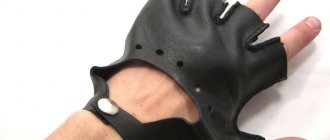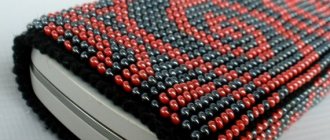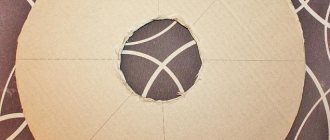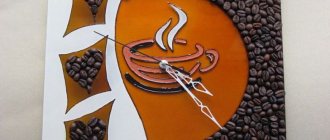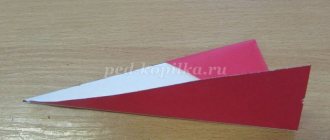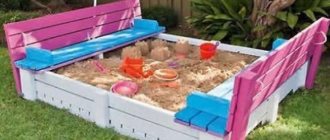sjigalov › Blog › DIY radio-controlled boat model. Part 1.
DISCLAIMER: EVERYTHING THAT IS DESCRIBED HERE, I DID MYSELF.
IN NO EVENT I AM SAYING THAT “THIS IS CORRECT, WE DO THIS.” THIS IS NOT A BOAT BUILDING INSTRUCTION. I DO NOT HAVE PROFESSIONAL TOOLS OR PROFESSIONAL WOOD WORKING SKILLS. I JUST LIKE WORKING WITH MY HANDS, GAINING EXPERIENCE, CREATING SOMETHING NEW. It all started in early February, when I accidentally came across parts for radio-controlled boats and catamarans on a well-known Chinese website. I was pleased with their low price, relative to other types of models (until that moment, the idea was to assemble a truggy or a monster based on a 1:10 scale short-course that had been lying on the balcony for a long time. But the prices for the parts were upsetting). And I caught fire. With my engineering thinking I figured out what parts were needed and what needed to be installed. I began to think about how to build a building. Since I have never been a shipbuilder, I started looking for hull drawings on the Internet. After spending several days searching, I was able to find them. If someone suddenly also wants to do something similar, the keywords are “Wasabi900e”.
900 is the length of the boat in mm. I also saw drawings for 1300 mm for a boat with an internal combustion engine.
I went to the printing center and printed out the drawings in A1 format. The original pdf file is in exactly this format. Everything was printed with millimeter accuracy. (My coursework has never been printed even with such accuracy, even if it was created according to size). We print 2 copies, or better yet 3, just in case. One copy of the main drawing for verification, the second for the stencil. Third - let it be.
We go to a normal hardware store and look at the plywood. You need plywood, ideally 6mm. I couldn’t find one, but I found 4mm plywood, sawn into 50x50cm squares. Take 2 even(!) sheets. You will also need PVA carpentry glue (I already had universal glue, but later I bought a can of waterproof glue). We also look at a manual jigsaw and files for it.
If you have some kind of special tool for figure cutting, that’s generally great. You have to cut a lot and for a long time.
We are looking for a place to work, preferably a large table with good lighting, and glue the cut out parts from one of the drawings onto PVA. We clamp the plywood to the table with a clamp, and begin reciprocating movements with a jigsaw, and at the same time remembering the drunken worker at school.
I made a model at work. During one night shift I made the bow of the boat.
A small nuance. The central part, on which the 4mm plywood frames are attached, turned out, in my opinion, thin. It bent easily and was crooked. Glue it onto the plywood, pressing it well over the entire area, let it dry, and cut it out to the same shape as the one already cut out. We get 8mm thickness. Already more serious. We glue the frames, not forgetting that the grooves on them (in the center) are designed for 6mm plywood, they need to be expanded to 8mm.
On the next night shift I did the stern part. The drawing shows that it consists of a lower “board” 6 mm thick. We read the drawing and calculate the length - 441mm. I drew it on paper in advance, glued it to plywood, and sawed it out. We saw the remaining frames in the same way. We glue the keel and frames together, maintaining the dimensions. We do everything accurately so that it is not crooked.
The next step is gluing the body together. Docking occurs in the center. I took a board and put the stern and bow on it. Secure it with electrical tape. Under the nose part, approximately in the center, I placed electrical tape so that the nose was glued correctly and did not look down.
An important point: in the drawing, on the frames there are rectangular high “ears”. They are needed so that when the boat is turned upside down, it stands on them at the same height. In theory, it should be assembled this way.
In general, the skeleton is ready. The next point is the stringer(s) (I don’t know how to do it correctly) - long longitudinal sticks connecting the frames together. In the same hardware store I took a 10x10 mm bead, 150 cm long. According to the drawing they should be 6x6 mm. I clamp it in a vice and cut off the excess with a utility knife. You can use a plane, but I didn’t spend the extra money, and I have nowhere to find it. We glue them in starting from the stern to the bow, clamping them with a twisted pair wire. We’re not in a hurry to glue the nose yet, there’s a lot of work to do to make it look beautiful.
Motor. Clutch. Deadwood. Screw
In this chapter, I’ll talk about what is most intimidating in boatbuilding for beginners - about the homemade deadwood (waterproofed shaft) and what is located on both sides of it: the propeller and the motor. Well, how to connect all this with your own hands so that it works reliably and flawlessly on a bait boat.
A homemade deadwood for a boat consists of the following components:
- The body is a thin-walled tube from an old refrigerator. External diameter 5mm, internal – 4.5mm. The edges had to be rolled out manually so that bearings with an outer diameter of 6 mm would fit on both sides.
- The shaft is a stainless steel rod with a diameter of 3 mm. On one side I cut an M3 thread for attaching the propeller.
- Bearings 3*6*2 mm. I ordered the bearings from the Chinese. In the photo there were bearings with boots, but upon arrival it turned out that instead of a boot there was only some kind of wire. The Chinese returned the money, but I decided to bet what I had.
- Oil seals. Their role is played by TO-220 insulating bushings (radio components, if anything).
The photo above and the video below show how the deadwood is assembled.
During operation, the oil near the bearings can heat up and become more liquid, so I decided to add more seals from simple 3/5 mm rubber rings. They are inserted directly in front of the bearing.
I used LITOL-24 as a thick lubricant. There are several nuances in filling the deadwood. You need to fill the deadwood housing with grease so that there is only grease inside, and not half grease, half water. To do this, the tip of the syringe is cut off to create a straight tube. The piston is removed. And such a tube is simply inserted into the barrel (or whatever you have) with lubricant to the very edge. Then the piston is inserted into the syringe, and only then do we remove the syringe completely filled with lubricant without air.
As for the clutch, I consider it my duty to inform you that you need to use the factory clutch. I checked many homemade rubber and metal options, but until I bought a normal coupling and aligned the motor in a plumb line, there were constant problems with reliability and runout.
When choosing a motor, I was dumbfounded by the prices, so I started looking for alternatives. I found the most powerful of the cheap ones - this is the 540-4065 electric motor.
I think that it was even possible to use a slightly weaker motor, but I can’t say so, since I haven’t tested my bait boat with weaker motors yet. Perhaps someday it will come to this, in order to increase the power reserve from a single battery charge.
I made the propeller myself from 1 mm thick brass. I cut out three identical blades in the shape of a pig's ear. And I soldered them to a bronze stand with an M3 thread. It turned out well, but I advise you to buy it, or you will have to make a device for proportional soldering of the blades.
After the first tests, it became clear that everything works well, but under one condition: if the sternwood has a fulcrum not far from the propeller. In my case, the screw is located at a considerable distance from the deadwood exit from the body. I decided to fix it relative to the body of the water cannon by soldering three MZ nuts to the deadwood and connecting the water cannon and the deadwood with screws.
Watch about copters: How to fly a radio-controlled helicopter: step-by-step guide
Radio controlled ship model from a toy car
The peculiarity of this homemade product is that the model is as close as possible to the real ship, that is, the proportions are respected. In total, the assembly process consists of several stages, this is the preparation of the necessary parts, the creation of the body, as well as the assembly and testing of the homemade product.
Ship manufacturing process:
Step one. We obtain the necessary elements
First you need to disassemble the machine and get all the necessary elements. The ship will need a rear wheel drive, an electronic part (radio control), a steering gear, and a compartment in which the batteries are installed. The machine is disassembled using a screwdriver, first the body is removed, and then the radio module and other elements are unscrewed. When disassembling, you need to use a camera or mark the wires. Otherwise there may be difficulties later. You need to remember how the wires from the board to the motor, power supply, and antenna are connected. Often toys use very thin wires. It is advisable to remove them and solder them with a larger cross-section.
The engine compartment also needs to be cut out from the bottom; the author used a hacksaw blade for this purpose. When all the elements are removed, it is advisable to check their functionality.
Step two. Ship hull
The body is cut out in one piece, using a piece of polystyrene foam 60 mm thick. First you need to make a paper pattern with the contours of the boat deck. The dimensions of the pattern are 400 × 80 mm. Next, the contours are transferred to polystyrene foam and cut out using a jigsaw at an angle or straight. The aft cut must be made to match the diameter of the propeller.
Step three. Installing the necessary elements into the case
To install the shaft, they need to carefully push the hole into the motor. The shaft is attached to the gearbox axis using a piece of plastic tube of suitable diameter. It can be glued or tied with copper wire. After this, the motor needs to be started, if it works without effort, then you can install the screw on the shaft.
The engine, as well as the steering gear, are mounted on hot glue.
As for the ship's superstructure, it is made of foam plastic cut into thin pieces. The sheets are connected to each other using hot-melt adhesive. Inside the add-on there is a radio control board. As for the antenna, it is made from a piece of enameled copper wire, which is mounted on a mast made from a barbecue skewer.
Step four. Ship testing
Now you can start testing. It is quite possible that the boat will float crookedly; it can be easily centered using the keel. As for the control range, it is as much as 100 meters, which is more than enough for such a model. The ship can be modified by changing the size and pitch of the propeller.
Source
An improved method for making a reversible boat
Fishermen who use a water kite in practice to catch fish have noticed the inconveniences associated with returning or, more correctly, catching the trophy using gear. Pulling up required some effort and constant control of the tension of the cord with instantaneous reeling, which clearly did not provide comfortable fishing. These inconveniences are especially noticeable when hunting at long distances, 100 meters or more, on rivers with moderate currents and at rapids, where the water jets are even stronger.
The inquisitive mind and ingenuity of the fisherman gave rise to the construction of reversible boats, which, with certain manipulations with the controls, change the trajectory of movement to the opposite one. Thus, bringing the cord to the shore, by influencing the direction of movement of the boat by the same water flow, but without the discomfort of winding up the cord in an emergency mode with uncontrolled fishing for the trophy. The possibility of reverse is provided by the additional placement of a metal bracket with a ring, which is attached to the outside of the small can of the swimming device. Unlike the simple method of regulating the stroke, where the thread is fastened to a stationary hook, in the reverse version the cord is knitted to a movable ring.
At the moment the boat is launched at a distance, the tension ring takes a certain position, moving the product away from the shore. If, after catching a fish or checking the bait, the cord is given slack and then sharply pulled, the position of the ring spontaneously shifts to the opposite part of the bracket. After changing the position of the fasteners, the trajectory of movement also changes, returning the vessel in the opposite direction. The bracket is the most primitive way of organizing reverse movement. Fishermen have also developed more complex mechanisms for changing trajectories, which are based on the forces of displacement of attachment points and require additional materials, tools and sketches for production, which is already within the power of experienced mechanics and mechanics.
Theory
The submarine model is built according to the same principles as the real one. In a waterproof housing, inside of which all controls and electronics are hidden. On the outside, it is surrounded by a “light” permeable body, which serves as a streamliner and a beautiful appearance. Our model will consist only of a durable body.
At speed, the submarine can dive using depth rudders, and in a static position only with the help of a ballast tank. How it works? When floating on the surface, the mass of the boat is slightly less than the mass of the volume of displaced water (Archimedes' law). Those. if the boat has a volume of 3 liters, then its mass should be slightly less than 3 kg.
Theoretical calculations of the immersion of a submarine model.
There are 3 main problems during construction. They are completely independent and can be solved separately.
Sailing yacht drawings
Sailing yachts have a high level of comfort and convenience. However, if the yacht does not have high seaworthiness, then these features do not matter. A sailing yacht must have a certain load level and maintain the required freeboard height. Failure to comply with these conditions may lead to the sinking of the vessel. When constructing a drawing of sailing yachts, the main parameters are width, length, side height and draft. A yacht helmsman must know these parameters.
The drawing of a sailing yacht is a complex curved surface of the hull, which is depicted in the form of projections. This projection has three planes that are interconnected. The projections depict the stripes of intersection of the skin with the planes. The position of such projections must be carried out in accordance with the rules of shipbuilding. The basic planes are the main plane, the mid-frame plane and the diametrical one. These planes are the beginning of the remaining coordinate planes and serve to correctly calculate the parameters of the yacht.
Ballast tank
This is usually the most difficult part of a submarine. But we will do it simply - we will use a micropump. More precisely, a peristaltic micropump - it holds the pressure itself and does not require additional valves. The pump itself is capable of developing a pressure of 1 atmosphere, which means it can pump a tank at a depth of up to 10 meters. The pump is controlled in the same way as a conventional electric motor - a speed controller or servo with micro switches.
The original silicone tube in the pump was 2.54mm, changed to 46mm. As a result, throughput increased by 1.5 times. The motor is designed for 6 volts, I supply 12. The motor heats up a little, but not critically. The final speed is 100ml in 20 seconds.
Battery and charger
An inexpensive computerized charger allows you to charge directly from a car battery. Costs 680 rubles.
We take LiPo batteries - these are the best that can be found on the model market.
We put 2 batteries in the cart for 380 rubles, the total price became 5710.
You can not skimp and take the top ones, 2 pieces for 1150 rubles and the total price will be 8150 rubles, but since fishing is not every day, it is cheaper to change cheap ones every 3-4 years.
And here is a video of how a homemade boat sails to deliver bait across the lake.
I’ll talk about connecting all the electronics in a separate article, but for now, let’s summarize.
Layout
The boat measures 60cm in length and 7.5cm in diameter. Inner diameter 71mm. The plugs extend 2.5cm each.
Inside the case is divided into “compartments”.
The tank must be in the middle so that the boat sinks horizontally (there is no trim).
The fastening elements are made of 5mm thick porous PVC sheet. Then they are tightened on iron pins located along the body. The rear plug should also be secured to studs to ensure the rigidity of the assembly with the motor and steering rods.
Initially, stroke controllers were used to control the motor and pump. But their reverse is much slower than forward rotation, which is not convenient for the pump. During testing, I did not install a separate UBEC power circuit and used the built-in 1 amp BEC. Because I received a defective servo that jammed, at that moment the current jumped and burned the entire regulator.
The 550 series motor is redundant for a model of this size; you can get a smaller one. It is attached with screws to a special bracket to the rear plug. Connection to the shaft through a brass coupling.
It is also worth installing Fail-safe modules on the pump and motor channels. The engine is set to turn off, and the pump is set to purge the tank.
How much does it cost to build a boat for delivering bait?
So, the final price of the equipment is 5,870 rubles.
Is it a lot or a little?
Bait delivery boats sold in stores cost about 30,000 rubles. At the same time, they use brushed motors (20-30 trips on water and you need to change the motor brushes or replace the engines) and outdated equipment on the FM band (prone to interference, you can lose control of the boat).
Usually, after six months of using a purchased boat for delivering bait, they begin to remodel it - change the engines to a brushless version (see the price above in the article), along with the engine, the regulators will have to be changed to a brushless version.
The transmitter and receiver also require replacement - they install Turnigy 9x, it operates in the noise-immune range of 2.4 gigahertz.
A lead-acid battery loses its characteristics over the winter, unless, of course, it is discharged and charged a couple of times a month - but who does that? So, on the advice of experienced people, they change the battery to LiPo, they are not susceptible to such phenomena, and buy a charger for them.
In fact, all that remains of the purchased boat is the hull and a pair of servos for opening hatches with bait.
Are you ready to pay 30 thousand rubles for a pair of servos costing less than 300 rubles and a housing that can be made in a couple of weekends?
So it turns out that making a boat for delivering bait with your own hands is much more profitable!
To catch up - you can buy a cheap toy boat for 2-3 tr, add floats on the sides to it (made from polystyrene foam and covered with tulle on a scuba tank, fiberglass on a plastic one, or painted with auto enamel) and drive it around. You can open the feeder compartments by pulling a strong nick or fishing line from the ground - this is the cheapest option!
